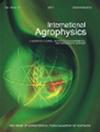Comparison of thermal and thermomechanical methods of seed extraction from larch cones based on two case studies
IF 2
4区 农林科学
Q2 AGRONOMY
引用次数: 1
Abstract
. The paper analyzes two seed extraction methods used by Polish silvicultural seed extractories. The analysis involves cone batches as well as individual cones processed in extraction cabinets. During thermal extraction, the cones were dried (10 h), moistened with water (10 min), and dried again (10 h). During thermomechanical extraction, the cones were dried for a much longer time (40 h), and then crushed in a mechanical unit (20 min). The two examined cases of seed extraction were compared in terms of the size, weight, and moisture content of the cones involved, the steps in the extraction process, as well as the quantity and quality of the obtained seeds. Each of the extractories made use of cones of a different provenance, which differed significantly from each other. In order to compare the different seed extraction methods, the same batch of cones collected from one geographic locality should be used. The results of a process analysis show that the thermal method was superior in terms of energy efficiency and duration. The seeds extracted using the two methods were of the highest quality (class I), which indicates that in both cases the extraction process was conducted appropriately and did not cause the quality of the seeds to deteriorate.基于两个案例的落叶松球果热提取和热机械提取方法的比较
本文分析了波兰造林种子提取物的两种种子提取方法。该分析涉及锥批以及在提取柜中处理的单个锥。在热提取过程中,将锥体干燥(10小时),用水润湿(10分钟),然后再次干燥(10 h)。在热机械提取过程中,将锥体干燥更长的时间(40小时),然后在机械单元中压碎(20分钟)。从所涉及的球果的大小、重量和水分含量、提取过程中的步骤以及获得的种子的数量和质量等方面对两种检查过的种子提取情况进行了比较。每种提取物都使用了不同来源的锥体,这些锥体彼此之间存在显著差异。为了比较不同的种子提取方法,应该使用从一个地理位置收集的同一批球果。过程分析的结果表明,热法在能源效率和持续时间方面是优越的。使用这两种方法提取的种子质量最高(I类),这表明在这两种情况下,提取过程都进行得适当,不会导致种子质量恶化。
本文章由计算机程序翻译,如有差异,请以英文原文为准。
求助全文
约1分钟内获得全文
求助全文
来源期刊

International Agrophysics
农林科学-农艺学
CiteScore
3.60
自引率
9.10%
发文量
27
审稿时长
3 months
期刊介绍:
The journal is focused on the soil-plant-atmosphere system. The journal publishes original research and review papers on any subject regarding soil, plant and atmosphere and the interface in between. Manuscripts on postharvest processing and quality of crops are also welcomed.
Particularly the journal is focused on the following areas:
implications of agricultural land use, soil management and climate change on production of biomass and renewable energy, soil structure, cycling of carbon, water, heat and nutrients, biota, greenhouse gases and environment,
soil-plant-atmosphere continuum and ways of its regulation to increase efficiency of water, energy and chemicals in agriculture,
postharvest management and processing of agricultural and horticultural products in relation to food quality and safety,
mathematical modeling of physical processes affecting environment quality, plant production and postharvest processing,
advances in sensors and communication devices to measure and collect information about physical conditions in agricultural and natural environments.
Papers accepted in the International Agrophysics should reveal substantial novelty and include thoughtful physical, biological and chemical interpretation and accurate description of the methods used.
All manuscripts are initially checked on topic suitability and linguistic quality.
 求助内容:
求助内容: 应助结果提醒方式:
应助结果提醒方式:


